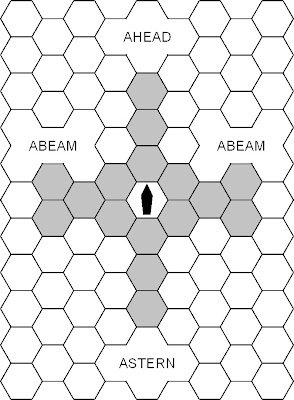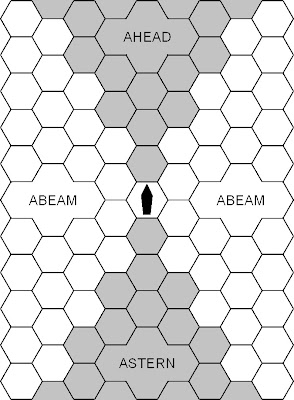Scenario
The Maharajah of Kanatuna had been allowing – and possibly even leading – raiding parties that had been attacking native villages across the border in British Chindia. The local British District Commissioner ordered the commander of the British garrison in the area – Colonel Sir Johnny Come-Lately – to mount a punitive expedition against Kanatuna to teach the Maharajah a lesson and to deter future raids.
Colonel Sir Johnny Come-Lately assembled his expeditionary force along the border with Kanatuna. It comprised:
Turn 1
Knowing that the Maharajah was likely to set up his main defence line across the obvious line of advance, Colonel Come-Lately deployed his troops in an extended line they moved forward. The Maharajah was wary of the British advantage in firepower – he had heard about the devastating effect of machine gun fire and shells from the newly introduced rifled artillery – and posted most of his units on low hills so that they would gain some advantage from the terrain.
 As both sides had artillery that could fire at enemy units, the turn began with an inconclusive artillery duel, where neither side managed to hit an enemy unit.
As both sides had artillery that could fire at enemy units, the turn began with an inconclusive artillery duel, where neither side managed to hit an enemy unit.
 Both sides then threw a D6 die to see who would move first. The British threw a 2 and the Kanatunans threw a 6; therefore the British moved first.
Both sides then threw a D6 die to see who would move first. The British threw a 2 and the Kanatunans threw a 6; therefore the British moved first.
Colonel Come-Lately decided that the best course of action was to move his artillery up so that they could begin to soften up the enemy at shorter range, prior to an all-out infantry assault. He therefore ordered a general advance toward the Kanatunan positions.
The Maharajah, who felt that the much-feared British artillery was not as good as its reputation had implied, did nothing, and left his troops where they were.
 Turn 2
Turn 2
Both sides engaged the other with their artillery, but again it had no effect.
 Both sides then threw a D6 die to see who would move first. The British threw a 1 and the Kanatunans threw a 4; therefore the British moved first again.
Both sides then threw a D6 die to see who would move first. The British threw a 1 and the Kanatunans threw a 4; therefore the British moved first again.
All the British units advanced, including the artillery (which would now not be able to fire at the beginning of the next turn), and the infantry and machine guns opened fire. Even though the range had been reduced, the British were unable to inflict many casualties on the Kanatunans; however, the rifle fire of the McBean Highlanders did drive one of the Kanatunan artillery units out of its position, thus rendering it unable to fire as it no longer had direct line-of-sight to a British unit.
 With the exception of the artillery unit that had been driven back and that used the opportunity to regain their previous position, the Kanatunans remained where they were, and returned fire. Their fire was twice as effective as that of the British, and they inflicted one casualty on each on the Border Guides and the Highlanders, and two on the Cambridgeshire Light Infantry.
With the exception of the artillery unit that had been driven back and that used the opportunity to regain their previous position, the Kanatunans remained where they were, and returned fire. Their fire was twice as effective as that of the British, and they inflicted one casualty on each on the Border Guides and the Highlanders, and two on the Cambridgeshire Light Infantry.
 Turn 3
Turn 3
Only one artillery unit could fire – one of the two Kanatunan artillery units – as both the others had moved during the previous turn. It fired at the British machine gun unit … which it hit, causing a single casualty.
 Both sides then threw a D6 die to see who would move first. The British threw a 6 and the Kanatunans threw a 2; therefore the Kanatunans moved first.
Both sides then threw a D6 die to see who would move first. The British threw a 6 and the Kanatunans threw a 2; therefore the Kanatunans moved first.
The Maharajah decided that rather than attack the British – which would justify their claims that he was an aggressor – he would keep his units where they were, and rely upon their rifle fire to defeat the British. All the Kanatunan infantry units fired at the nearest enemy infantry unit … with varying effect. The Border Guides lost a further two men, whereas the McBean Highlanders and Cambridgeshire Light Infantry suffered no casualties at all.
 At this point Colonel Come-Lately realised that he had underestimated strength – and effectiveness – of the Maharajah’s army. He therefore decided to withdraw his punitive expeditionary force for the moment, and return at some future date with a much stronger force. The British did not, however, depart with their tails between their legs; theirs was a fighting withdrawal, and any unit that could fire as it moved back, did so. The Cambridgeshire Light Infantry was the only British unit to inflict any casualties on the Katatunans, who’s Cream Turban Infantry suffered the loss of two men.
At this point Colonel Come-Lately realised that he had underestimated strength – and effectiveness – of the Maharajah’s army. He therefore decided to withdraw his punitive expeditionary force for the moment, and return at some future date with a much stronger force. The British did not, however, depart with their tails between their legs; theirs was a fighting withdrawal, and any unit that could fire as it moved back, did so. The Cambridgeshire Light Infantry was the only British unit to inflict any casualties on the Katatunans, who’s Cream Turban Infantry suffered the loss of two men.

Comments
The rules certainly worked without a hitch, but I realised that I need to make it clear that an artillery unit that has moved – even if it is a result of being forced to withdraw – cannot fire during the next turn. It is also apparent that the 15mm figures I used in the play-test have bases that are just a bit too large for the Heroscape hexed terrain. This leaves me with several choices:
The Maharajah of Kanatuna had been allowing – and possibly even leading – raiding parties that had been attacking native villages across the border in British Chindia. The local British District Commissioner ordered the commander of the British garrison in the area – Colonel Sir Johnny Come-Lately – to mount a punitive expedition against Kanatuna to teach the Maharajah a lesson and to deter future raids.
Colonel Sir Johnny Come-Lately assembled his expeditionary force along the border with Kanatuna. It comprised:
- An infantry unit each from the Border Guide, the McBean Highlander, and the Cambridgeshire Light Infantry Regiments,
- A machine gun unit from the Queen’s Own Hertfordshire Regiment (armed with a Gatling Gun), and
- An artillery unit from the Royal Artillery (armed with rifled artillery).
- An infantry unit each from the Red, White and Cream Turban Regiments, and
- Two artillery units (each armed with smooth-bore artillery).
Turn 1
Knowing that the Maharajah was likely to set up his main defence line across the obvious line of advance, Colonel Come-Lately deployed his troops in an extended line they moved forward. The Maharajah was wary of the British advantage in firepower – he had heard about the devastating effect of machine gun fire and shells from the newly introduced rifled artillery – and posted most of his units on low hills so that they would gain some advantage from the terrain.
 Both sides then threw a D6 die to see who would move first. The British threw a 2 and the Kanatunans threw a 6; therefore the British moved first.
Both sides then threw a D6 die to see who would move first. The British threw a 2 and the Kanatunans threw a 6; therefore the British moved first.Colonel Come-Lately decided that the best course of action was to move his artillery up so that they could begin to soften up the enemy at shorter range, prior to an all-out infantry assault. He therefore ordered a general advance toward the Kanatunan positions.
The Maharajah, who felt that the much-feared British artillery was not as good as its reputation had implied, did nothing, and left his troops where they were.
Both sides engaged the other with their artillery, but again it had no effect.
All the British units advanced, including the artillery (which would now not be able to fire at the beginning of the next turn), and the infantry and machine guns opened fire. Even though the range had been reduced, the British were unable to inflict many casualties on the Kanatunans; however, the rifle fire of the McBean Highlanders did drive one of the Kanatunan artillery units out of its position, thus rendering it unable to fire as it no longer had direct line-of-sight to a British unit.
Only one artillery unit could fire – one of the two Kanatunan artillery units – as both the others had moved during the previous turn. It fired at the British machine gun unit … which it hit, causing a single casualty.
The Maharajah decided that rather than attack the British – which would justify their claims that he was an aggressor – he would keep his units where they were, and rely upon their rifle fire to defeat the British. All the Kanatunan infantry units fired at the nearest enemy infantry unit … with varying effect. The Border Guides lost a further two men, whereas the McBean Highlanders and Cambridgeshire Light Infantry suffered no casualties at all.
Comments
The rules certainly worked without a hitch, but I realised that I need to make it clear that an artillery unit that has moved – even if it is a result of being forced to withdraw – cannot fire during the next turn. It is also apparent that the 15mm figures I used in the play-test have bases that are just a bit too large for the Heroscape hexed terrain. This leaves me with several choices:
- Use my Hexon II hexed terrain. This has possibilities but would take up much more space than the Heroscape terrain and the 15mm figures might look a bit ‘lost’ in the larger hexes.
- Remount my 15mm figures onto smaller bases. This also has possibilities, but would require time that I currently don’t have and effort that I am unwilling to make.
- Leave things as they are for the moment, and live with the discrepancy whilst I am play-testing the rules. This is the option that I currently favour … although my next play-test may be set in a slightly later era than this one.




























.jpg)













